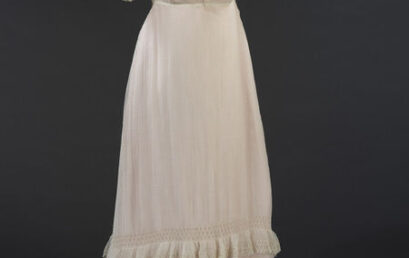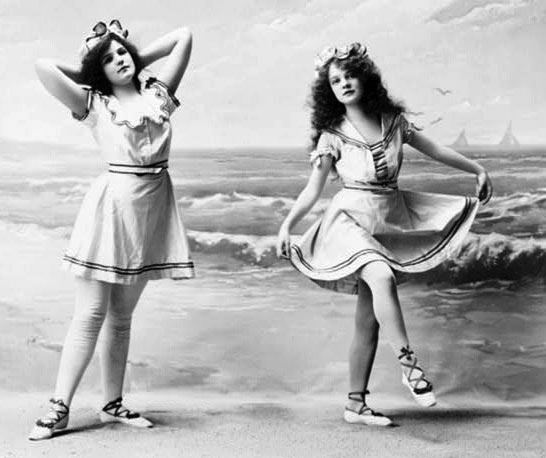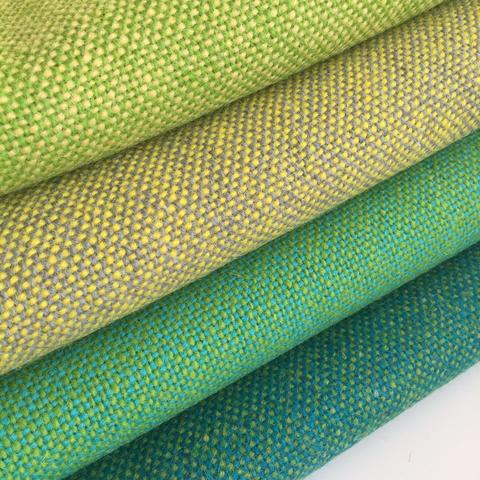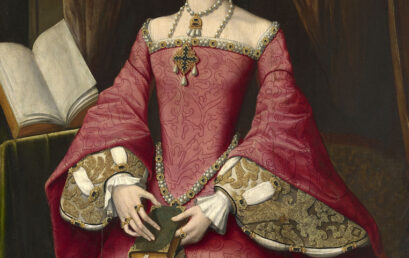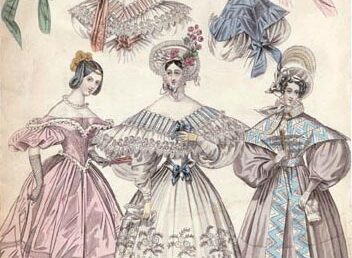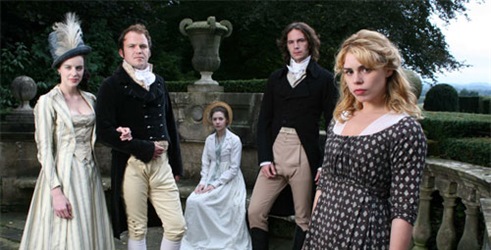Let Them Wear Muslin!
by Feather Tippets-Rosica. Originally published in the May / June, 2009 issue of Finery The transition from the elaborate gowns of the eighteenth century, worn over rigidly boned stays and hooped petticoats, to the soft muslin gowns associated with the heroines of Jane Austen’s novels was not a sudden event sparked by the French Revolution. Marie Antoinette started it well […]
By the Beautiful Sea
by Catherine Scholar. Originally published in the May / June, 2009 issue of Finery. What’s nicer than spending a sunny summer day at the seashore? For centuries, such a thing was never even considered. Going to the beach for fun was unheard of until eighteenth century doctors began prescribing sea-bathing for health problems. Even then, swimming itself was unknown; most […]
Steampunk Costuming
by Sahrye Cohen. Originally published in the March / April, 2009 issue of Finery. Cogs, clocks, shiny brass and ingenious inventions – your imagination is the limit in steampunk costuming! Steampunk is a sub-genre of science fiction set in an era or world where steam power is still widely used. Often this setting is Victorian or Edwardian Europe and America, […]
Fabulous! The Art of Being an Historical Fashion Icon
by Lindsey Eastman. Originally published for the March / April 2009 issue of Finery. How do you stand out in a sea of French Hood and giant turn back sleeves? Or differentiate yourself from every other woman in a sacque-back gown and lace? How do you make a bustle gown the toast of the room? These are the questions that […]
How to Care for Wool
by Diana Habra. Originally published for the January / February, 2009 issue of Finery. You have decided to make a beautiful mid-Victorian day dress. You have found the perfect fabric – a plaid wool in lovely shades of gray, lavender, and black. Your pattern is all set and you are ready to cut. But wait! It would be terrible if […]
Henrican (Tudor) Underthings
by Kimiko Small. Originally published in the January / February 2009 issue of Finery. When I see people reproduce Henry VIII era (1509-47) ladies costumes, they usually use what they already have for undergarments, which are most often from the later Elizabethan era (1558-1603). While there are similarities, it works best to wear Henrician undergarments under that era’s gowns. Smock: […]
Underneath the Romance: 1830s Skirt Supports
by Catherine Scholar, First published for the September/October 2008 issue of Finery The fashionable silhouette of the 1830s included a bell or dome shaped skirt, which was supported by multiple starched white cotton petticoats. This simple garment is difficult to research, as there isn’t much helpful information available, and few extant garments. In The History of Underclothes, authors Willet and […]
Hairstyles and Hats of the Edwardian Era, 1900-1915
by Kendra Van Cleave, First published for the July/August 2008 issue of Finery Hairstyles and headwear are inextricably linked in almost every era; hairstyles affect the shape and placement of the hat and vice versa. The “pompadour” popular in the 1890s belied its name. Rather than a large amount of volume, hair was dressed loosely but still simply and close […]
Film Review: Persuasion, Northanger Abbey and Mansfield Park (PBS, 2007)
by Elizabeth Urbach, First published for the March/ April 2008 issue of Finery In Persuasion, the women’s costumes were mostly well done, although it seemed to me that they were almost always wearing the same thing. I would have appreciated more variety in accessories and outerwear, especially, although I did enjoy seeing Anne’s “invalid” sister wearing a dotted shortgown over […]
Collecting Vintage Today
by Judith Hollenberger, First published for the March/ April 2008 issue of Finery Since the days of the $4 thrift store Victorian bodices are gone, what’s a person who wants to start collecting vintage clothing to do? First you must decide what you want to collect, for what purpose, and for how much money. Victorian? Art Deco? Display? Study? To wear? […]
